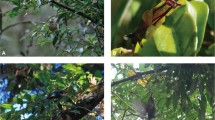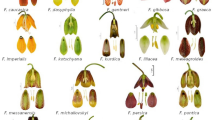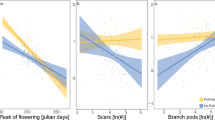Abstract
Linaria spuria, Miller, is a not uncommon weed of cornfields on calcareous soils in the Midlands and south of England, in western, central, and southern Europe, in, northern Africa, and in western Asia, and it occurs adventitiously in North America. I have never observed insects pollinating the flower. The corolla is closed, and probably small insects are unable to effect an entry; there are no “nectar-guides” the four anthers are adherent, mature simultaneously with the stigma, and dehisce internally. It would seem, therefore, as Kunth (“Handbook of Flower Pollination,” English translation by Ainsworth Davis, vol. iii., p. 177) states, that “automatic self-pollination is inevitable.” I fear “S. P.” will regard this answer to his question as analogous with the dictum: “There are no snakes in Iceland!”
This is a preview of subscription content, access via your institution
Access options
Subscribe to this journal
Receive 51 print issues and online access
$199.00 per year
only $3.90 per issue
Buy this article
- Purchase on Springer Link
- Instant access to full article PDF
Prices may be subject to local taxes which are calculated during checkout
Similar content being viewed by others
Author information
Authors and Affiliations
Rights and permissions
About this article
Cite this article
MOSS, C. The Pollination of Toadflax. Nature 98, 209–210 (1916). https://doi.org/10.1038/098209e0
Issue Date:
DOI: https://doi.org/10.1038/098209e0
Comments
By submitting a comment you agree to abide by our Terms and Community Guidelines. If you find something abusive or that does not comply with our terms or guidelines please flag it as inappropriate.



